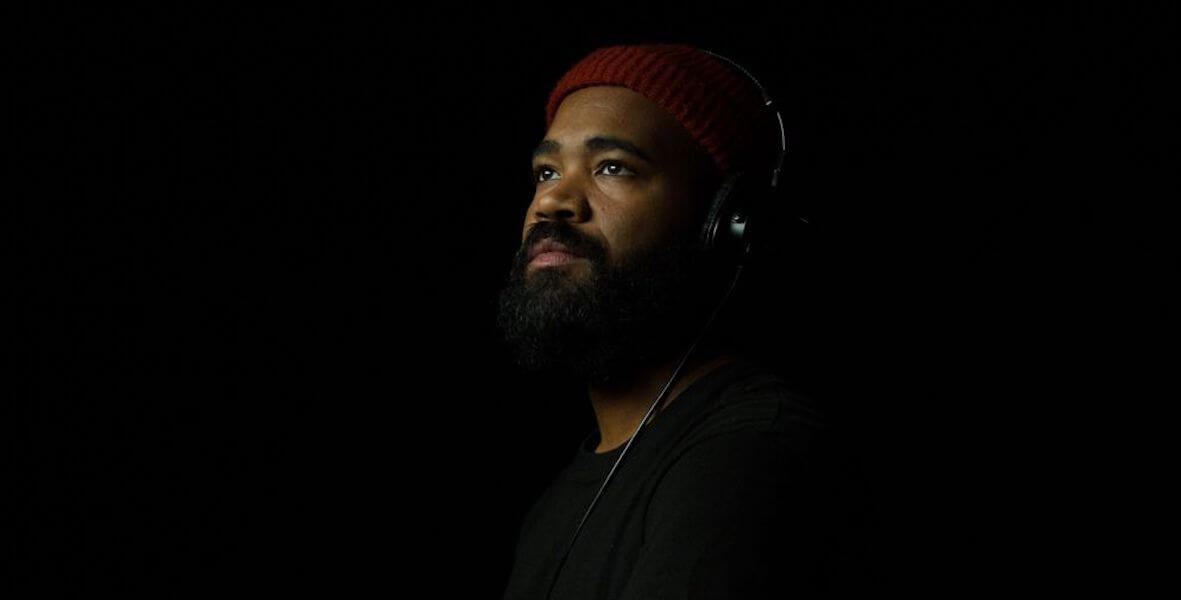What do you get when you cross a Philly dance party, a Pentecostal worship service, and a viral meme? You get a montage that is something between a party mix and experimental video art, and that is all Rashid Zakat, a videographer, DJ, and internet archivist. Zakat researches the magic that appears when people simultaneously connect with each other. For the last few years, he has worked on his project, Revival!, a video mix of R&B hits, classic cartoons, TikToks, gospel performances and more.
Zakat (a sometime Philadelphia Citizen contributor) speaks with humor and honesty, eager to display the hardships of life along with the absurdity of being a flawed human being. His confidence is well earned: Zakat has presented his work at the Fabric Workshop and Museum, The Lot Radio, the Philadelphia Museum of Art, and BlackStar Film Festival, to name a few. This fall, Revival! will be part of the exhibition, this bridge between star shine and clay, curated by Safia Siad at the Critical Distance Centre for Curators in Toronto. A future iteration of Revival! may take place in Philadelphia sometime in the winter. In the meantime, Zakat is happy to connect with his audience through curated Instagram posts. For those who need a good laugh, it’s a great place to start.
As part of a partnership with Forman Arts Initiative, The Citizen caught up with Rashid Zakat. This interview has been condensed and edited for clarity.
Logan Cryer: Where were you before you moved to Philly?
Rashid Zakat: I’m originally from Baltimore, born and raised. When it was time for me to apply to colleges, I was just getting into film and video. I had been doing video for my church for years, but at the time, I went to a performing arts high school and I studied theater. I thought that I wanted to be an actor until maybe 11th grade, and I was like, Fuck that shit. I actually don’t want that life.
The music I was listening to was all coming from Philly. I had a few friends that went to Temple, who were telling me about the program. It’s something that clicked where it was like, Temple’s program it’s not going to force me to go to Hollywood and do this thing. It’ll let me play with documentary, play with experimental form.
My goal really was to come and work with The Roots. I felt like if I could peak doing something, it would be doing anything with any of the musical artists that I was in love with. What kept me in Philly was that I got to do that.
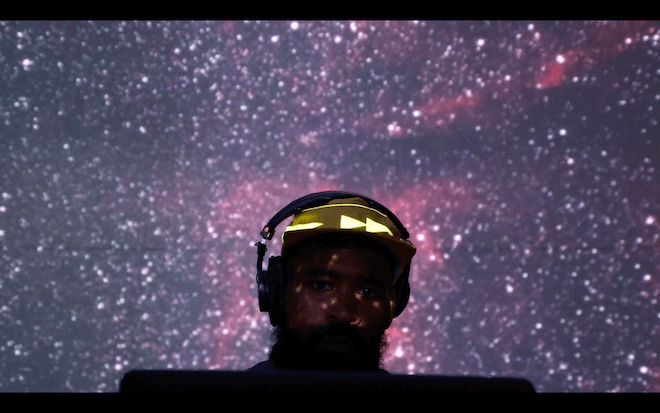
One big gig after I graduated Temple was working with Visit Philly to promote tourism: I had a lot of video clients that let me really connect with the Philly art scene, music scene, creative scene. That gig introduced me to a lot of people. I got to travel around with The Roots a little bit and shoot with them.
I didn’t really know at the time that video art was a thing, so the closest thing to me was doing documentary stuff. That was also the content days. The “big internet video” was becoming a thing.
When creative people are able to achieve a childhood dream, I wonder: What do you do from there?
I’ve been just thinking about how ambition and trauma are really tied together. Ambition is a really easy way to hide from pain. You know what I mean? Trying to accomplish things, trying to achieve heights, trying to check off these boxes as some way of trying to validate yourself internally, externally, this way of trying to prove your worth and as a way of trying to scratch this itch — or try to do anything but sit with the pain that existing brings.
Literally in the last couple of months, I’m just coming back to the simplicity of what I’m trying to ask for myself beyond having a regulated nervous system and working on my daddy issues and trying to get better at asking questions that I don’t really know how to ask. I’m trying to work intentionally to be an artist and an artist with a big A, where I’m introducing new ideas, I’m playing with ideas and forms and introducing new shit and blah, blah, blah.
There’s something in me that wants to always keep validating myself with achievement and with accomplishments, these external things because maybe then my dad, rest in peace, will love me. You know what I’m saying? But I really just got to sit with myself.
What is the role of the audience in your work?
I’ve been really obsessed with George Carlin lately and listened to a lot of George Carlin interviews, and he’s been talking about, and maybe it was more true at the time, how being a comedian is one of the few art forms that lets him get real-time feedback from an audience. He can read the room; he can look at people’s faces; he can look at people’s jokes. I think about DJing the same way, and I think because I come from a theater background and I grew up in church, where there’s an element of audience, I think I’m most at home when there’s a push and pull.
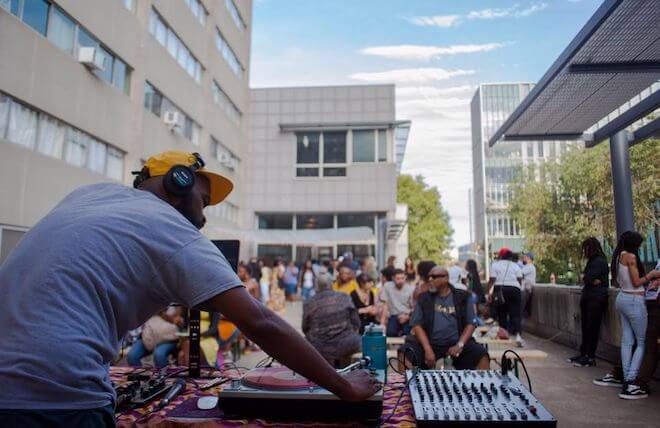
I think about the way that I work with the internet, for example. I’ve been playing with Instagram lately, and I’ve been getting such a great response. I have hard drives and hard drives of stuff that I’ve shot, but then also things that I’ve been cataloging from the internet for years. Downloading movies, downloading things from Instagram, downloading shit from Twitter, from Vine, because things on the internet disappear. I’ve been posting that stuff to Instagram.
That’s been a way to get really fast feedback on things as well, to sort of play with an audience and in a much faster way than I’m used to with filmmaking. It’s not quite a film, but I sequence them really intentionally. You’re supposed to move through them, and there’s a meta-story they tell. There’s such quick audience feedback because Instagram is like that.
I’ve been trying to find ways to get faster audience feedback because I’m way more interested in the conversation than the presentation. As a DJ, if I see people reacting in a certain way, then I want to have the ability to go left too. Maybe they are seeing something that I don’t see. I’m interested in the alignment of people. I’m interested in taking from what I got from church: I always equate it to catching the Holy Spirit. I’m interested in being with the audience as much as I can or getting feedback from the audience as much as I can.
Do you think that’s a specifically Black thing, that desire for call and response?
I feel like I always bring up Ja’Tovia Gary just because I’m in love with her work. I think she’s brilliant. I remember seeing her Cakes Da Killa doc. She wasn’t the first person that I’ve seen do this, but she inserted herself behind the camera, and so you could hear her talking to Cakes. Where my training was to let the person talk, be really quiet, she’s like, “Mm-hmm, darling, yes, no, but I’m going to interrupt you right there.” Then it all made it into the doc. I was like, That’s the Blackest shit ever of all time. It is where we are: Call and response is built into our shit, man.
Again, maybe it’s because I grew up going to a Pentecostal church. I don’t know. I’m sure there’s some science behind the neuro-whatever-whatever that you get from validation in that way. I feel like it’s wild living in a White culture, capitalistic-ass culture that isn’t particularly communal. We’re not built or encouraged to be communal, but then we have all of these communal-ass things that we can’t get rid of.
We’re all craving to be seen, but we’re also really craving to see, and we’re craving to have our seeing acknowledged, and we’re craving to have our being seen acknowledged, and we’re craving to acknowledge people’s being seen. That’s it. That’s what we want as human beings, but it’s built on all our systems to challenge against that or to not do that, or not interrupt or whatever.
What do you have coming up that you’re excited about? Are you planning on showing work anytime soon?
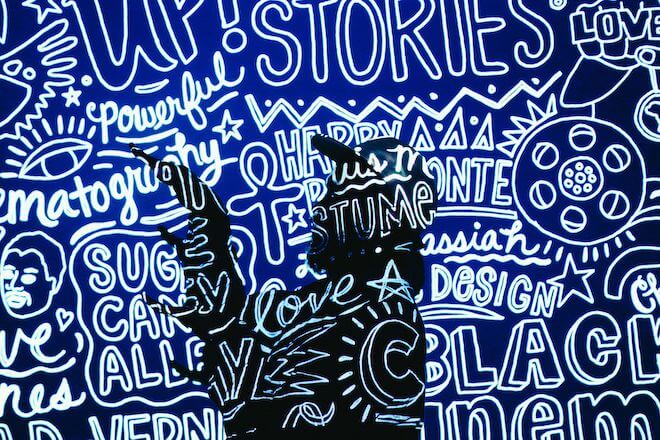
Revival!‘s going to be part of an exhibition called this bridge between star shine and clay at the Critical Distance Centre for Curators in Toronto. It’s the second installation of Revival! and the first one that has its own space, so that’s going to be really exciting. I’m going to do a VJ performance for that.
I have this other secret goal that I’m just accepting that I’m trying to be the Philly art DJ. If you need music for an art exhibit opening, I’m the first person that you think of.
What is it particularly about being the Philly art DJ? What does that mean for you?
Okay, I think — again, hot take — I think Philly produces the best DJs in the world. Anybody fight me in the comments. The cream of the crop, Philly will kill it every single time, world-renowned. Rich Medina, Jazzy Jeff, Matthew Law, Sonny James, world-class DJs, but I can’t compete with those dudes playing parties.
Where I come alive is like, Here’s this obscure Scandinavian funk record that you don’t necessarily … it’s not the thing you can dance to, but it’s dope. I want to share that with people. I enjoy radio. I enjoy these distant things, but I love seeing people in person, and I love playing. I love playing dance music, but I love playing stuff that you can just vibe out to or hear, or it sparks something.
I played a gig at the African American Museum in Philadelphia a few years ago. They had an exhibit opening, and I played [Kirk Franklin’s] Melodies From Heaven. For me, it was a fun moment because I was like, Yo, I know somebody’s going to bug out because who the fuck plays this shit? Then people bugged out. I get to play with that thing that I think I’m interested in in those settings. It feels like being an art DJ is a really interesting niche that I stumbled into that I’m like, Oh, I keep getting invited to do this, so why don’t I take this seriously and try to dig a little bit more into the space that I get a lot of joy out of. I’ve been in the Philly art scene for a really long time. I’ve just made a lot of friends. People like what I do, and that feels like also a way to stay connected socially to where I have a lot of relationships. I’m going to see some homies and I’m going to probably see some homies I haven’t seen in years. That feels like it checks off a lot of boxes.
Logan Cryer is a curator based in Philadelphia with a penchant for local art histories. They currently serve as the Co-Curator of Icebox Project Space and they like to rewatch documentaries.
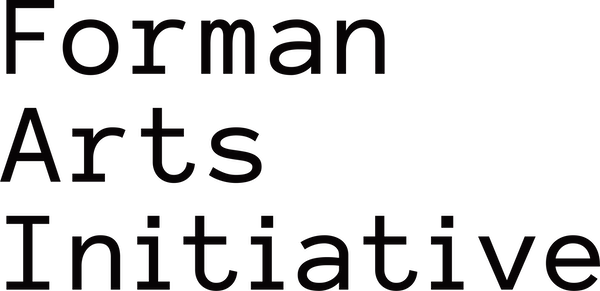 This story is part of a partnership between The Philadelphia Citizen and Forman Arts Initiative to highlight creatives in every neighborhood in Philadelphia. It will run on both The Citizen and FAI’s websites.
This story is part of a partnership between The Philadelphia Citizen and Forman Arts Initiative to highlight creatives in every neighborhood in Philadelphia. It will run on both The Citizen and FAI’s websites.
![]() MORE FROM OUR ART FOR CHANGE SERIES
MORE FROM OUR ART FOR CHANGE SERIES



